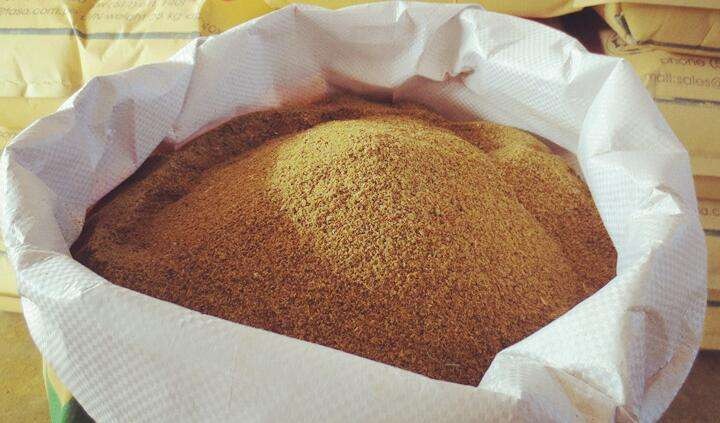Fish Meal Manufacturing Plant - Detailed Project Report, Cost and Revenue

Strong 8k brings an ultra-HD IPTV experience to your living room and your pocket.
Introduction
Fish meal is a protein-rich feed ingredient composed of fish and other seafood by-products that are dried and processed into a nutrient-dense product. The ingredient is manufactured by milling whole fish or fish residues, including trimmings, heads, and bones, into a fine powder after cooking and pressing to drain off excess water and fat. The main function of fish meal is to act as a source of protein and essential fatty acids in animal feed, mainly for aquaculture, poultry, and livestock sectors. High in omega-3 fatty acids, amino acids, and vital micronutrients, fish meal is known for its high digestibility and nutritional value. It is extensively applied to promote the growth, health, and productivity of farmed fish, shrimp, poultry, and pigs. The processing of fish meal is frequently in close association with the fishing sector, where fish species like menhaden, anchovies, and sardines are generally utilized as feedstocks.
The global fish meal market is experiencing steady growth, primarily driven by the rapid expansion of the global aquaculture industry, where fish meal plays a pivotal role in ensuring optimal growth and health in farmed fish species. With increasing demand for seafood, fish meal's high protein level and superior digestibility qualify it as a key component in fish feed. Furthermore, the rising demand for responsible and sustainable aquaculture is fostering the continued consumption of fish meal, backing up the nutrition of aquatic species without depending on large amounts of grain-based alternatives. Furthermore, the market for fish meal is boosted by the surging demand for animal protein in developing economies, especially in Asia and Latin America. With an increasing middle class and increased consumption of meat and seafood products, the demand for effective, protein-rich feed ingredients in poultry, livestock, and aquaculture operations is on the rise. The established performance of fish meal to improve feed conversion ratios and animal health renders it a popular choice among producers. In addition to this, the use of new technologies and innovations within fish meal production, including advanced processing methods and green sourcing methods, is defining market trends.
Project Scope and Overview
IMARC Group’s report, titled “Fish Meal Manufacturing Plant Project Report 2025: Industry Trends, Plant Setup, Machinery, Raw Materials, Investment Opportunities, Cost and Revenue,” provides a complete roadmap for setting up a fish meal manufacturing plant. This report delivers a structured analysis of the technical processes, equipment requirements, raw material sourcing, quality assurance, and economic feasibility for establishing a plant.
Manufacturing Process and Technical Workflow
This report offers detailed information related to the process flow and the unit operations involved in a fish meal manufacturing plant project. Moreover, information related to raw material requirements and mass balance has further been provided in the report with a list of necessary technical tests as well as quality assurance criteria.
Aspects Covered
- Product Overview
- Unit Operations Involved
- Mass Balance and Raw Material Requirements
- Quality Assurance Criteria
- Technical Tests
Request for a Sample Report: https://www.imarcgroup.com/fish-meal-manufacturing-plant-project-report/requestsample
Infrastructure and Setup Requirements
This section presents a comprehensive analysis of key considerations involved in establishing a fish meal manufacturing plant. It covers critical aspects such as land location, selection criteria, strategic significance of the site, environmental impact, and associated land acquisition costs. In addition, the report outlines the proposed plant layout along with the primary factors influencing its design. Furthermore, it provides detailed insights into various operational requirements and expenditures, including those related to packaging, utilities, machinery, transportation, raw materials, and human resources.
- Land, Location and Site Development
- Plant Layout
- Machinery Requirements and Costs
- Raw Material Requirements and Costs
- Packaging Requirements and Costs
- Transportation Requirements and Costs
- Utility Requirements and Costs
- Human Resource Requirements and Costs
Financial Projections and Economic Viability
This section provides a comprehensive economic analysis for establishing a fish meal manufacturing plant. It encompasses a detailed evaluation of capital expenditure (CapEx), operating expenditure (OpEx), taxation, and depreciation. Additionally, the report includes profitability analysis, payback period estimation, net present value (NPV), projected income statements, liquidity assessment, and in-depth examinations of financial uncertainty and sensitivity parameters.
- Capital Investments
- Operating Costs
- Expenditure Projections
- Revenue Projections
- Taxation and Depreciation
- Profit Projections
- Financial Analysis
Key Considerations for Plant Design and Operations:
Production Capacity:
The selection of machinery and the design of the plant layout should be aligned with the intended scale of production, which may vary from small-scale operations to large industrial facilities. This alignment ensures optimal utilization of space, resources, and production capabilities.
Automation Levels:
The degree of automation should be adjusted based on factors such as labor availability, budget constraints, and the level of technical expertise. Options may range from semi-automated systems to fully automated solutions, allowing for flexibility in capital investment and operational efficiency.
Location Adaptation:
Plant location should be strategically selected to align with local market demand, ensure proximity to raw material sources, leverage available labor, and comply with regional regulatory requirements. These factors collectively contribute to improved operational efficiency and cost optimization.
Product Flexibility:
The plant should be equipped with processes and machinery capable of accommodating a variety of product specifications. This flexibility enables manufacturers to respond to diverse and evolving market demands effectively.
Sustainability Features:
Incorporating sustainable practices is essential. This includes the integration of renewable energy sources, implementation of efficient waste management systems, and use of energy-efficient machinery to meet environmental standards and long-term sustainability objectives.
Raw Material Sourcing:
The supply chain strategy should be customized to ensure reliable and cost-effective sourcing of raw materials. This approach should consider client-specific requirements and regional supply dynamics to maintain consistent production and manage input costs.
About Us:
IMARC Group is a leading global market research and management consulting firm. We specialize in helping organizations identify opportunities, mitigate risks, and create impactful business strategies.
Our expertise includes:
- Market Entry and Expansion Strategy
- Feasibility Studies and Business Planning
- Company Incorporation and Factory Setup Support
- Regulatory and Licensing Navigation
- Competitive Analysis and Benchmarking
- Procurement and Supply Chain Research
- Branding, Marketing, and Sales Strategy
Contact Us:
IMARC Group
134 N 4th St. Brooklyn, NY 11249, USA
Email: [email protected]
Tel No:(D) +91 120 433 0800
United States: +1-631-791-1145
Note: IndiBlogHub features both user-submitted and editorial content. We do not verify third-party contributions. Read our Disclaimer and Privacy Policyfor details.


